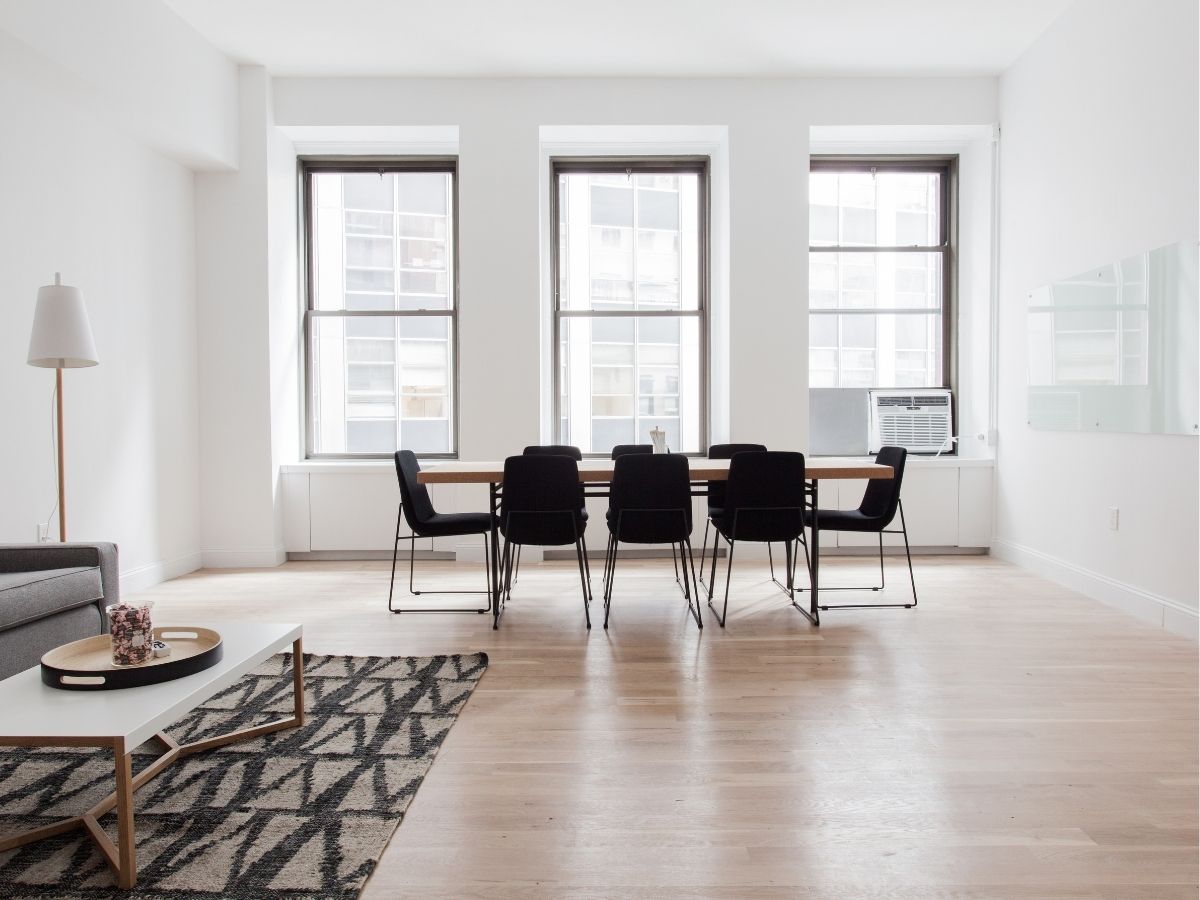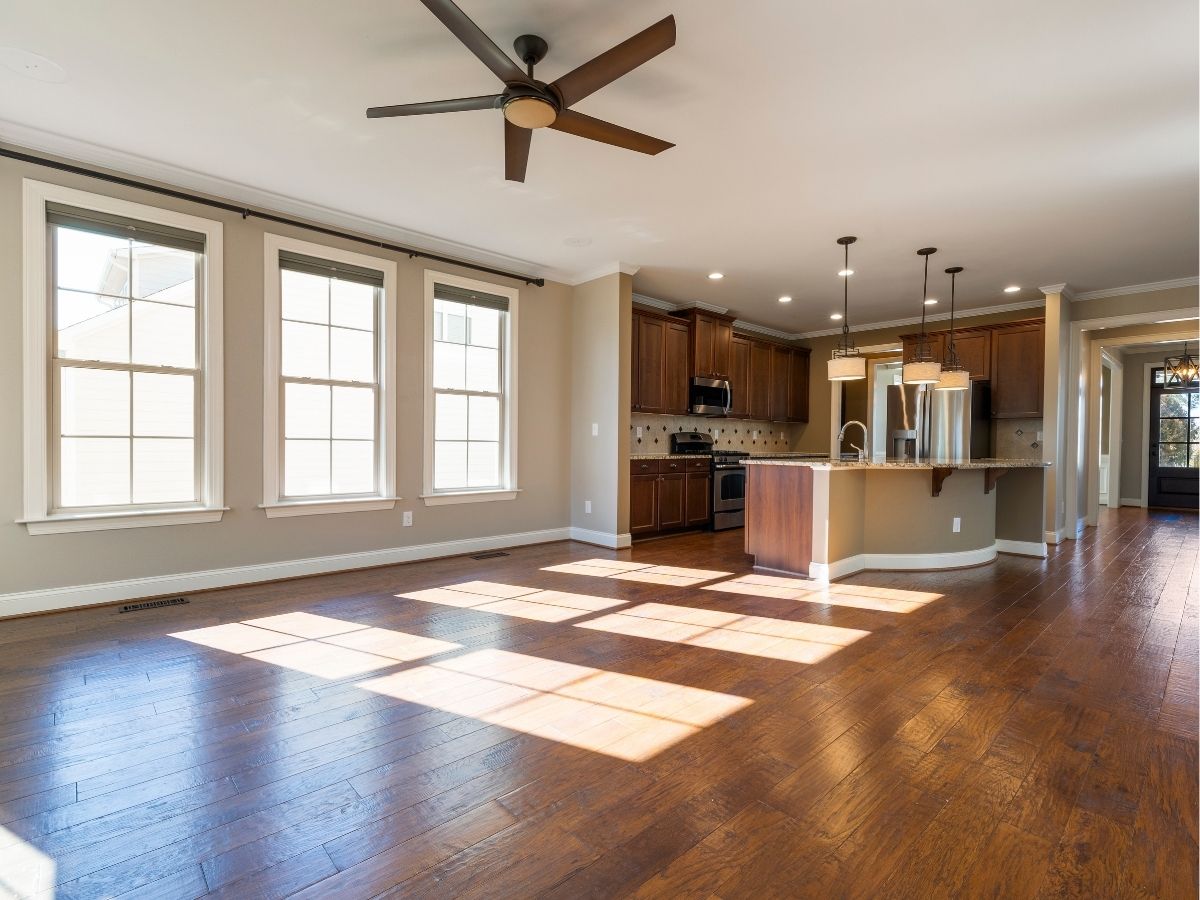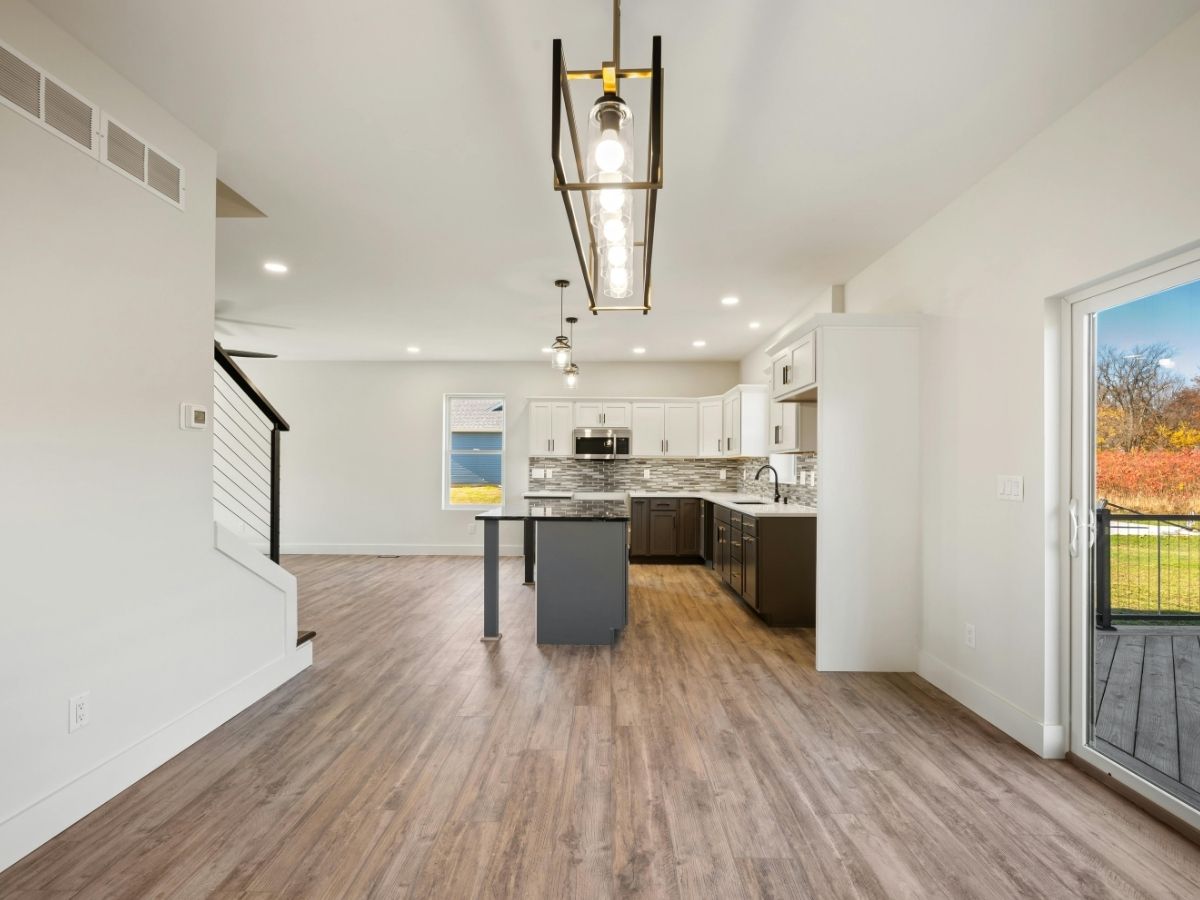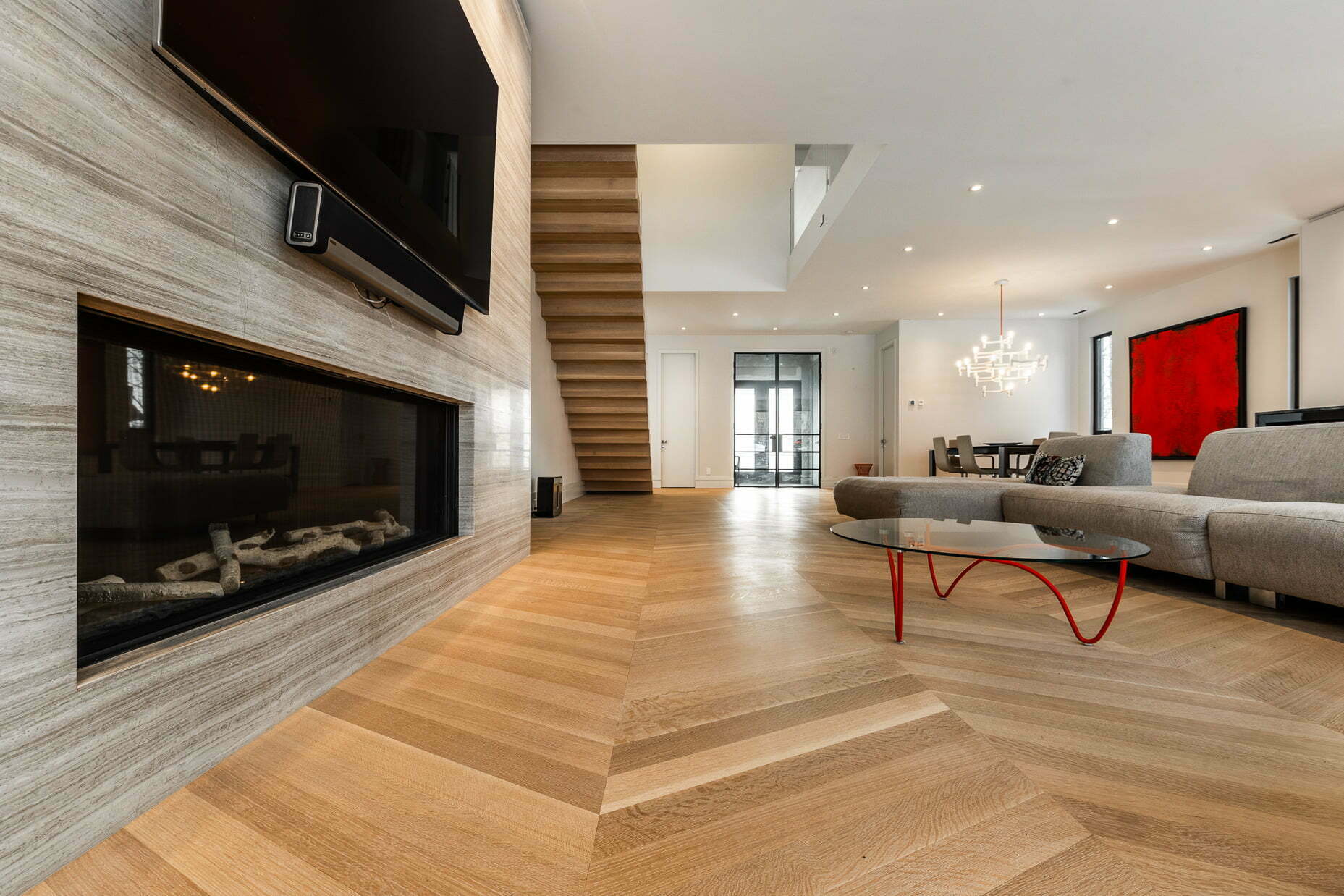Floor sanding is an essential step in restoring the beauty of your wood floors. Whether you’re restoring an old floor, reviving a worn surface or simply updating the look of your interior, it’s a key investment in preserving the beauty, durability and value of your home. Sanding removes scratches, stains and irregularities, giving your floors new life and a flawless appearance. A well-maintained floor doesn’t just look good: it also protects the structural integrity of wooden spaces, extending their lifespan and strengthening their resistance to daily wear and tear.
However, one question is often asked by homeowners: How much does floor sanding cost? The price of floor sanding can vary considerably depending on a number of factors, such as the surface area to be treated, the initial condition of the wood, the type of finish desired and the region in which you live. Added to this are factors such as labor costs, the cost of materials and any repairs required prior to sanding. These details play a crucial role in estimating your budget.
In this article, we’ll explore the different factors that influence the price of floor sanding, pricing models (per square meter or per hour), and tips for effective budgeting and avoiding unexpected expenses. We’ll also compare average prices for floor sanding in different regions, to give you a concrete idea of the costs involved. Finally, we’ll present you with concrete examples and practical advice to help you better understand the process, while maximizing the value of your investment in your wood floors.
Table of Contents

What factors influence the price of floor sanding?
The price of floor sanding can vary considerably, depending on a number of criteria. Before embarking on this project, it’s important to understand the elements that can influence the price of floor sanding, so you can better plan your budget. Here are the main elements to consider:
Area
The size of the surface to be sandblasted has a direct impact on the price of a floor sanding job. The larger the surface, the more time, effort and resources the job will require, increasing the overall bill. Sandblasting companies generally charge by the square meter, so you can get an accurate estimate based on the size of your space. For example, a large living room or open space will require much more time than a small room, and this will be reflected in the estimate.
Type of wood
The type of wood your floor is made of also plays a key role in determining costs. Hard woods such as oak or maple often require more effort and specific equipment to work properly, which can add to the final price. Softer woods, such as pine, are generally easier and quicker to sand, which can reduce the cost of floor sanding. On the other hand, exotic woods, because of their rarity, density and the special techniques they may require, often entail additional costs. These rare woods sometimes require advanced expertise, which can also influence labor costs.
Floor condition
The initial condition of your floor is another determining factor. If your floor has significant damage, such as deep scratches, embedded stains, holes or warped planks, the professional will need to do additional work to restore the surface before it can be sandblasted. This sometimes includes replacing certain boards or making specific repairs, which will increase the price of a floor sanding job. The more damaged the floor, the greater the time and effort required to achieve a flawless result. Old or poorly maintained floors often require additional steps, such as stripping or levelling.
Desired finish
After sanding, do you simply want to keep the surface unfinished, or add an extra finish? Finishing options such as varnish (matte, satin or gloss), oiling or staining bring a variety of aesthetic results, but also influence the total cost of your project. High-quality products, high-end finishes or custom stains may require more expensive materials and longer application times. For example, a finish with several coats of varnish for a high-gloss effect may require several days’ work, which will have an impact on the final budget.
Travel expenses
Finally, your location can also influence the price of floor sanding. If you live in a remote, rural or hard-to-reach area, travel costs may be added to the bill. Sandblasting companies often include these charges to compensate for the extra time and cost of transporting equipment to your home. If possible, opt for a company located nearby to reduce the price of floor sanding.
By taking all these factors into account, you’ll have a better idea of the costs associated with a floor sanding project. Don’t hesitate to ask for several quotes to compare floor sanding prices and services, while making sure you choose a qualified professional to guarantee impeccable, long-lasting results.
Pricing models: hourly rates vs. fixed costs
The way a professional charges for his or her services can vary according to the project and the customer’s preferences. Understanding these models can help you choose the option that best suits your situation and budget. Here are the two main pricing models used in floor sanding:
Hourly rates
Some companies prefer to bill their services by the hour. This method can be advantageous for small surfaces or quick renovations, as it allows a certain amount of flexibility. For example, if an unforeseen event occurs, such as the need to repair a damaged section of floor, it’s easier to adjust the work time without recalculating a fixed rate. However, this model involves a degree of uncertainty for customers, as the price of floor sanding depends directly on the time required to complete the work. This can also be a problem if the job takes longer than expected, increasing expenses.
Fixed costs
More commonly, professionals calculate their rates according to the surface area to be covered, often measured in square meters. This model is particularly suitable for large surfaces, or when a precise budget needs to be established in advance. With fixed charges, customers benefit from greater transparency, as they can find out the price of floor sanding before the work begins. This method is also ideal for comparing several quotes from different professionals, since rates are generally based on standard criteria such as surface area and materials used. However, fixed costs sometimes include an additional margin to cover unforeseen events, which can make the cost slightly higher in some cases.
Pricing example:
- Hourly rate: Generally between $70 and $110 per hour, depending on a number of factors, such as region, job complexity and professional experience. For example, an experienced craftsman in a large city might charge a higher hourly rate than a company located in a regional area. This type of pricing could also include additional charges for specific tools or materials used during the job.
- Price per square metre: Between $20 and $50 per m², depending on a number of criteria, such as the type of wood, its initial condition and the particularities of the project. For example, hard, old wood with deep cracks or stains will require more sanding and care, which will increase the price of floor sanding. Conversely, soft wood in good condition will require less work, which can reduce the price of floor sanding. Some professionals also include the cost of finishing in the fixed price, while others charge it separately.
Ultimately, the choice between hourly and fixed rates will depend on your preferences, the nature of the project, and your budgetary constraints. Take the time to talk to the professionals and request several quotes to make sure you choose the option best suited to your needs.

Tips for budgeting and reducing the cost of floor sanding
Here are a few tips to optimize your budget and reduce floor sanding expenses:
Request several quotes
Call on at least three specialized companies to compare floor sanding prices, services and deadlines. This will help you find an option that best suits your budget and expectations. Take the time to carefully read the online reviews of these companies to assess the quality of the service offered and avoid unpleasant surprises. Don’t hesitate to ask detailed questions about the services included in the quote, such as the type of varnish used, repairs to damaged boards, or any additional charges, such as cleaning up after sanding. The more information you have, the more informed your choice will be.
Prepare the area in advance
Before the professional arrives, make sure the room is ready. Clean the area thoroughly, move furniture and remove any fragile or decorative objects. This step can reduce the amount of work required and, consequently, the price of floor sanding. You may also consider removing baseboards if recommended, as this can facilitate the sanding process and ensure a more even finish. Although it’s not compulsory, this advance preparation shows that you’re organized, which can also leave a good impression on the professional.
Choose a local professional
There are several advantages to working with a local company. It often reduces travel costs, which can add up quickly if the company is based far from you. In addition, local professionals are generally more familiar with the particularities of the types of wood frequently used in your area, which can enable them to better adapt their sanding and finishing techniques to achieve optimum results. What’s more, they’re often more accessible if you need follow-up or minor touch-ups after the work has been completed.
Plan out of season
As with many services, some sandblasting companies offer discounts during off-peak periods, such as autumn or winter, when demand is lower. By scheduling your work during these periods, you may benefit from lower rates and greater availability of professionals. Ask about special offers or one-off promotions offered by certain craftsmen, such as discounts for repeat customers or packages that include several services (sanding, repair and finishing). Planning ahead can not only save you money, but also ensure that the work is completed within the timescale that suits you best.
By following these tips, you’ll not only be able to stay within your budget, but also ensure that you get a quality result for your floors. With the right preparation and selection, you’ll enjoy a perfectly renovated floor, while saving on unnecessary costs.
Average price range for floor sanding in Quebec
Floor sanding is an essential step in bringing your wood surfaces back to life, but the price of a floor sanding job can vary depending on a number of factors. These include the region, the complexity of the project, the type of wood, and the finishes chosen, not to mention the overall condition of the floor. Here’s a detailed overview of average costs to help you plan your budget:
- Small area (up to 10 m²): Between $200 and $500. This price for floor sanding is ideal for rooms such as a small bedroom, hallway or entryway. Projects of this size are often quicker to complete, but still require careful preparation to achieve a uniform result. If specific finishes, such as stain or varnish, are added, this can slightly increase the price of a floor sanding job.
- Average surface area (20 to 50 m²): Between $600 and $2,000. This floor sanding price is ideal for rooms such as living rooms, dining rooms or medium-sized open-plan spaces. The price of floor sanding can vary according to the quality of the wood and its condition: more worn or damaged wood will often require more work, which is reflected in the final price.
- Large surfaces (over 50 m²): Starting at $2,000, and up to $6,500 for very large houses, lofts or commercial spaces. These projects are more time-consuming and complex, especially if the wood is particularly worn, cracked or in need of repair before sanding. High-end finishes, such as eco-friendly varnishes or custom stains, can also push up the bill.
In large metropolitan areas like Montreal, rates tend to be slightly higher. This is due to greater demand and sometimes higher travel costs. However, the advantage of these areas lies in the availability of a wider range of service providers, allowing you to compare several quotes to find the one that best suits your needs and budget.
Don’t forget that other factors can influence the price of floor sanding, such as whether you choose to work with an independent craftsman or a specialized company, the need to move furniture, or the complexity of floor patterns (parquet, herringbone, etc.). For optimum results, it may be a good idea to invest in quality finishes, as they offer greater durability and an aesthetic appearance that enhances your interior in the long term.
Concrete examples of floor sanding projects and prices
To better illustrate the variations in rates and the specifics of floor sanding work, here are detailed examples of actual projects with their estimated costs:
- Condo in Montreal, 25 m² in oak, average condition:
- Details of work: Standard sanding and finishing with a classic varnish to restore the wood’s lustre. This type of project is ideal for spaces with moderate wear and tear and no complex repairs.
- Estimated cost of floor sanding: Approx. $1,100.
- Estimated lead time: 1 to 2 working days, including varnish drying time.
- House in Quebec, 50 m² pine with deep scratches:
- Details of work: Intensive sanding is required to eliminate visible scratches and correct wood imperfections. An oiled finish is applied for a warm, natural look, often preferred in traditional or rustic homes.
- Estimatedcost of floor sanding : Approx. $1,850.
- Estimated time: 2 to 3 working days, depending on the number and depth of repairs required before finishing.
- Loft in Trois-Rivières, 100 m² in exotic wood (very worn):
- Work details: A complex job involving replacement or repair of some damaged boards, followed by meticulous sanding and application of a high-end varnish to preserve the unique look of the exotic wood. This type of project is often aimed at homeowners who want a high-end, long-lasting result.
- Estimatedcost of floor sanding : Approx. $5,500.
- Estimated delivery time: 4 to 5 days, mainly due to the complexity of the repairs and the time needed to guarantee impeccable results.
These examples show that floor sanding is not just an expense, but a real investment. Not only does it restore life and sparkle to your space, it also helps to increase its aesthetic and functional value. Depending on the condition of your floors and the type of finish you desire, sanding can transform your interior and extend the durability of your wood surfaces. Don’t hesitate to ask for a detailed estimate of how much floor sanding will cost and how long it will take!

Why call in a professional?
Good sanding makes all the difference! Even if it represents an investment, calling in a professional guarantees :
- A flawless finish that enhances the natural beauty and uniqueness of your wood, while providing a uniform, aesthetically impeccable result.
- The judicious choice of materials and techniques adapted to the wood species. This ensures not only that the natural properties of the wood are respected, but also that your floor will last longer over the years.
- Fast, meticulous workmanship, with no risk of damaging your existing floor or compromising its integrity.
Professionals use specialized tools and advanced technologies to minimize dust, often a major problem when sanding. They also ensure even application of finishing products, whether varnishes, oils or stains, prolonging the life and appearance of your floor.
Some homeowners choose to do the sanding themselves to save money. However, this entails significant risks: inexperience or poor tool handling can lead to serious mistakes, such as deep scratches or uneven wear, which can irreversibly damage the wood. These errors can lead to even higher costs for correcting the work or replacing damaged slats altogether. At the end of the day, investing in a professional means opting for peace of mind and a guaranteed result.
In conclusion
The price of floor sanding depends on many factors, such as the size of the surface, the condition of the wood and the desired finish. One thing’s for sure: it’s well worth the investment to bring your floors back to life. By taking the time to explore your options, compare quotes and plan strategically, you can achieve exceptional results within your budget.
Ready to transform your floors? Contact our expert partners today for tailored advice and a free quote! Request a free quote.
Mebesa offers sandblasting, dust-free sanding and floor installation and finishing services in the following cities: Saint-Hubert, Montreal, Brossard, Boucherville, Sainte-Julie, Saint-Constant, La Prairie, Chambly, Sainte-Catherine, Saint-Lambert, Longueuil, Laval, Delson, Pointe-Claire, Saint-Sauveur, Saint-Jean-sur-Richelieu, Terrebonne, Repentigny, Granby, Kirkland, Châteauguay, Beloeil, Candiac, Saint-Bruno-de-Montarville.
For more information on hardwood flooring, see the following articles:
Montreal South Shore: Floor sanding experts available in over 20 cities
Dust-free wood floor finish, what are the benefits?
Simple 6-step method for sanding hardwood floors
Simple 3-step price estimate for hardwood floor sanding
Frequently asked questions
-
Why sandblast a floor?
Sanding a floor is an essential step in restoring its appearance and shine. This operation removes scratches, stains and traces of wear accumulated over the years. What’s more, sanding opens the wood’s pores, making it easier to apply a new finish and ensuring better adhesion. In short, sanding extends the life of your floor and improves the overall aesthetics of your space.
-
How do I restore a varnished floor?
To restore a varnished floor, it’s important to start by carefully cleaning the surface to remove any dirt or dust. Then, if the varnish is slightly worn, a simple top coat may suffice. For more extensive damage, however, a thorough sanding will be necessary to completely remove the old varnish before applying a new coat. Use a quality varnish to guarantee long-lasting protection and a flawless finish.
-
How to sand wood floors?
Sanding a wood floor requires a few key steps. First, clear the room of all furniture and clean the surface thoroughly. Next, use a sander fitted with coarse abrasive paper to remove old coats of finish and even out the wood. Gradually move on to finer grit to achieve a smooth surface. Once you’ve finished sanding, thoroughly vacuum up the dust before applying the desired finish. If you’re unfamiliar with the use of sanding tools, it’s always best to call in an expert.






0 Comments